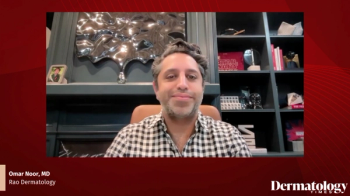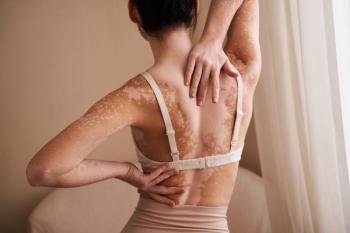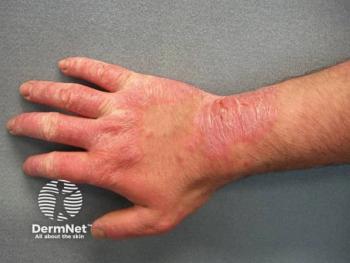
Arcutis Presents Long-Term INTEGUMENT-OLE Data on Roflumilast at RAD 2025
Key Takeaways
- Roflumilast cream 0.05% shows safety and efficacy in children aged 2-5 with atopic dermatitis, according to the INTEGUMENT-OLE study.
- Significant improvements in itch and body surface area were observed, with sustained results over time, even with reduced application frequency.
Arcutis Biotherapeutics showcases promising long-term results of Zoryve for atopic dermatitis in young children at RAD 2025, emphasizing safety and efficacy.
Arcutis Biotherapeutics will be presenting 5 posters at the 2025 Revolutionizing Atopic Dermatitis (RAD) Conference in Nashville, Tennessee, including new long-term results of roflumilast (Zoryve) cream 0.05%.1 Positive data from the INTEGUMENT-OLE study supports the safety and effectiveness of the drug in pediatric patients with atopic dermatitis (AD) between the ages of 2 and 5.
“AD presents unique challenges in this youngest age group, not only because the skin is more sensitive, but also because the condition often covers a greater percentage of their total body surface area compared to older children and adults. In addition, long-term management of AD requires treatment that can deliver rapid relief of itch, sustained symptom improvement over time, and that is tolerable when applied to the skin,” said Patrick Burnett, MD, PhD, FAAD, chief medical officer at Arcutis. “Our goal is to address this unmet need by providing advanced targeted topical therapies that can manage symptoms effectively over the long-term, while also improving the quality of life for individuals and their families living with this chronic condition."
The phase 3, multicenter, “Interventional Trial Evaluating Roflumilast cream for the Treatment of Atopic Dermatitis - Open Label Extension” (INTEGUMENT-OLE) trial evaluated roflumilast cream 0.15% in adults and children ages 6 years and older, along with roflumilast cream 0.05% in children ages 2 to 5 years. A total of 1,220 patients were enrolled in the study. These results support Arcutis’
At the week 4 mark, 30.2% of patients achieved a validated Investigator Global Assessment (vIGA-AD) score of clear (0) and switched to twice-weekly application. In these participants, the median duration of disease control was 238 days (34 weeks). Disease control was defined as maintaining a vIGA-AD score of clear or almost clear, along with adequate control of signs and symptoms.
It was also proven that both roflumilast cream 0.15% and 0.05% significantly improved itch and reduced mean percent body surface area (BSA) in patients 2 and older. These changes were maintained or further improved as the study progressed, even in those who switched to twice-weekly application. At the end of week 4, 32.7% of participants 6 years and over, and 28.8% of participants 2 to 5 years achieved vIGA-AD 0/1. This improved to 55.7% and 63.1% by week 52, respectively.
About 30.9% of participants 6 years and over and 41.2% of participants 2 to 5 years observed a ≥4-point reduction in Worst Itch Numeric Rating Scale (WI-NRS). This improved to 55.3% and 60.7%, respectively, after 56 weeks. Over 40% of patients in each category achieved no or minimal itch by the conclusion of the trial. Both treatment formulations were also well-tolerated. Treatment-related adverse events, including application site pain, were reported in just 4.7% of patients 6 years and over and 2.5% of participants 2 to 5 years old.
“Chronic use of topical steroids in patients with AD, especially in young children, is associated with significant adverse events, making steroid-free options critical in this population. There is a significant need for effective, long-term treatments among patients of all ages, but especially young children whose AD symptoms can often become so overwhelming that the condition impacts the entire family,” said Jonathan Silverberg, MD, PhD, MPH, co-chair of RAD 2025 and a professor of dermatology and the director of clinical research and contact dermatitis at The George Washington University School of Medicine and Health Sciences in Washington, DC. “These data highlight that ZORYVE cream 0.15% and investigational ZORYVE cream 0.05% provided long-term improvements in AD signs and symptoms, including reductions in itch and BSA, in children and adults who transitioned from once-daily to a twice-weekly application. These findings reinforce the well-established efficacy and safety profile we’ve seen with the ZORYVE cream 0.15% formulation and build further confidence in the potential of investigational ZORYVE cream 0.05% formulation, especially as a long-term, steroid-free option for younger children where tolerability and safety are paramount.”
References
1. Arcutis to Present New Long-Term Results of ZORYVE® (roflumilast) Cream at the 2025 Revolutionizing Atopic Dermatitis Conference. Arcutis Biotherapeutics, Inc. June 6, 2025. Accessed June 6, 2025.
2. Arcutis Submits ZORYVE® (roflumilast) Cream 0.05% Supplemental New Drug Application to the FDA for the Treatment of Children Aged 2 to 5 with Mild to Moderate Atopic Dermatitis. News release. Arcutis Biotherapeutics, Inc. December 16, 2024. Accessed June 6, 2025.
Newsletter
Like what you’re reading? Subscribe to Dermatology Times for weekly updates on therapies, innovations, and real-world practice tips.



















